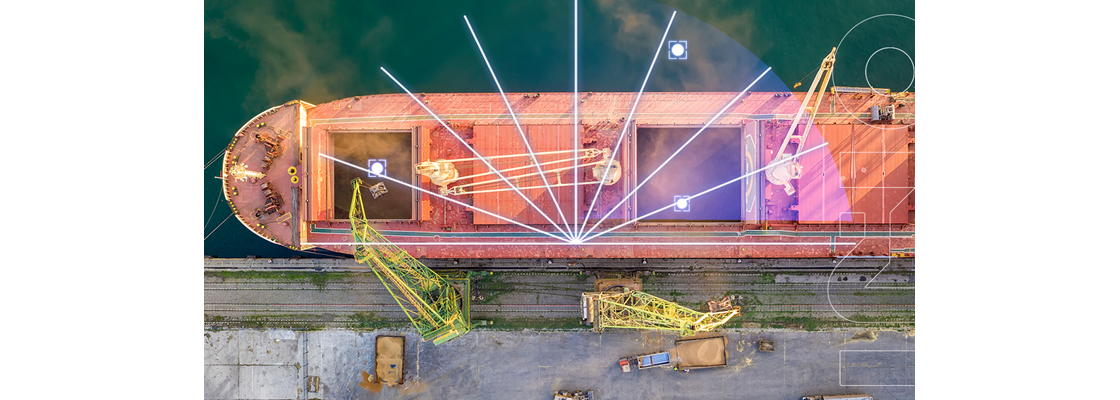Port activities, such as dry bulk transshipment, storage and handling, are often responsible for the release of dust particles. These emissions from open sources are referred to as fugitive, as they are not released into the atmosphere in a defined stream.
Challenges
Regulatory Compliance
Like all industries whose operations may have an impact on air quality, port operators are subject to both provincial and federal regulations. In Quebec, such operators must obtain a ministerial authorization in which they are required to demonstrate their compliance with legal and regulatory requirements: they must invariably remain within the limits set by the air quality regulation or law in force. Thus committed to ensuring adequate environmental protection, they must submit an environmental management plan. In this plan, they are required to notify the Ministry whenever dust concentrations exceed established standards. Should emission levels too often exceed set limits, those responsible face fines and visits from government representatives, who may require mitigation measures to be implemented.
Social Responsibility
Under current Quebec regulations, any citizen may lodge a complaint with the Ministry if he or she sees and photographs a dust cloud visible more than two metres from its emission source. Beyond the regulatory impact, this type of situation may be damaging to one’s reputation. The settling of dust on garden furniture, window frames, patios and cars is a nuisance that undermines social acceptance of port operations in residential areas. In some cases, it can lead to lawsuits, class action suits and media coverage directing attention to the company’s social responsibility.
Port Operations
Increasingly stringent regulations, air quality control and public pressure are adding to the complexity of dry bulk handling operations in port areas. The unloading of bulk materials, such as ore, cement, flour and grain, onto docks generates fugitive dust emissions. Even when these materials are stored in silos or warehouses, vehicle movements and the opening of doors may raise dust particles that are dispersed by the wind. In addition, truck and handling equipment traffic on dusty or unpaved roads also raises dust particles, which can lead to a deterioration in air quality on the site or in adjacent residential areas.
Mitigation Solutions
To control fugitive dust emissions, port operators implement mitigation measures that vary in cost and impact.
In North America, watering is the solution most frequently used to control fugitive dust emissions in ports. Materials permitting, dust clouds are kept to a minimum by spraying water droplets onto mounds of dry material and unpaved roads on the site. Nevertheless, there is a risk that contaminated water will run off into bodies of water.
Ports also use covered belt conveyors for dry bulk transshipment and handling. This solution isn’t perfect, however, as the presence of holes in the structure and the use of shutters impair its watertightness and allow dust particles to escape.
One of the most effective solutions is to build a wall to block dust clouds carried by gusty winds. However, this solution is quite costly as well as unsightly.
Many port facilities install air quality detection and measurement systems to detect fugitive emissions as early as possible and intervene quickly to control them.
Detection and Measurement Solutions
Point Sensors
Port operators may position optical or filter-based point sensors at strategic locations to detect and measure particle concentrations in the air. Measurements may be taken anywhere on site, or even among the population, thanks to the installation of fixed sensors. If the measurements recorded in populated areas exceed the standards, it will already be too late. The damage will already have been done and may be dangerous in populated areas. Furthermore, fixed optical sensors are mainly installed on poles or placed on the ground. If the emission phenomenon generates a cloud propagating aloft, the latter cannot be detected.
It is possible to deploy a system consisting of several point sensors and model the data obtained, according to meteorological conditions (wind speed, constancy and direction), in order to locate the source of the dust. This is, however, a complex and time-consuming operation. Port authorities must adjust their operations on the basis of obtained readings and weather conditions. Nonetheless, this method is restrictive and difficult to implement.
Lidar Use
Unlike fixed sensors, the use of lidar makes it possible to rapidly cover a vast area (a few hundred metres over 360 degrees) and continuously detect fugitive dust emissions in real time. Lidar covers an area equivalent to that covered by 70,000-point sensors. The lidar is connected to an environmental management system that identifies the source, informing and alerting the person(s) responsible for the emissions. It thus acts on emission sources before point sensors can measure an increase in dust concentration.
To optimize their operations, ensure regulatory compliance and maintain a good level of on-site air quality, port operators should set up monitoring networks composed of several components. To continuously measure air pollution levels, they should first position sensors around the site. Then, they should install one or more lidars to detect fugitive dust emissions. Finally, they should use a centralized environmental management system that collects, analyzes and presents data in real time to ensure large-scale monitoring and help identify sources of dust emissions in ports. To visualize such a network, consult the infographic: Fugitive dust emission detection and measurement solutions in action in a port area.



